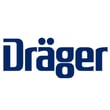The customer
HELLA GmbH & Co. KGaA („FORVIA HELLA“) is a publicly traded, internationally positioned Automotive supplier. As a company within the FORVIA Group, FORVIA HELLA stands for high-performance lighting technology and vehicle electronics.At the same time, the Business Group Lifecycle Solutions cover a broad service and product portfolio for the spare parts and workshop business as well as for manufacturers of special vehicles. With around 37,500 employees at over 125 locations, the company is active worldwide and achieved adjusted sales of 8.1 billion euros in the 2023 fiscal year.
Initial situation
Electronic Power Steering (EPS) is a key technology for assisted and autonomous driving. As a vehicle system of the highest safety classification (ASIL-D), its development is subject to the requirements of ISO 26262, particularly regarding traceability and the application of semi-formal notations and semi-formal verification. The resulting demands on the system architecture can only be met if a methodically consistent approach is adhered to by all engineers involved in the project.
Due to its high importance for the relationship with the end customer, the project received significant attention from FORVIA HELLA‘s management from the very beginning. System engineers capable of methodically implementing a technical solution are an essential resource for such projects. itemis AG was selected as a development partner due to its expertise in model-based system development and its automotive know-how to support the project, especially in the application of Model-based Systems Engineering (MBSE).
Approach and solution by itemis
From August 2020 to December 2023, itemis AG supported the client‘s system team with up to nine system engineers at its peak. In accordance with the requirements of Automotive SPICE, ISO 26262, and ISO/SAE 21434, the system requirements analysis (SYS.2), system architecture design (SYS.3), and safety analyses such as FMEA and FTA for system features including vehicle communication, internal communication, current measurement, and central unit were independently handled. Additionally, in close coordination with the functional safety managers and other stakeholders, a methodical approach for the functional and technical decomposition of the overall system was developed.
This coordinated approach met all the requirements of the aforementioned standards and could subsequently be methodically aligned across the entire project, involving the whole team of system engineers. Moreover, the necessary reviews and inspections of the system test, hardware, software, and hardware-software interface specifications were accompanied.
In this context, itemis made a significant contribution to the successful completion of the development project.
Customer advantage / customer benefit
The project successfully passed the ISO 26262 Safety Assessment in October 2023 and received unrestricted approval from the customer for use in vehicles on public roads. The dedication and commitment of the system engineers from itemis contributed to the success of FORVIA HELLA. The targeted (methodical) knowledge transfer was successfully ensured through the development and rollout of the structured approach, as well as through close daily collaboration in the project routine.
Additionally, the prescribed methodology and toolchain were further optimized during the project. itemis now supports the transition of the project into the maintenance phase and organizes the necessary (technical) knowledge transfer for this purpose. itemis also continues to assist with the implementation of project-wide improvements that could not be realized concurrently.



